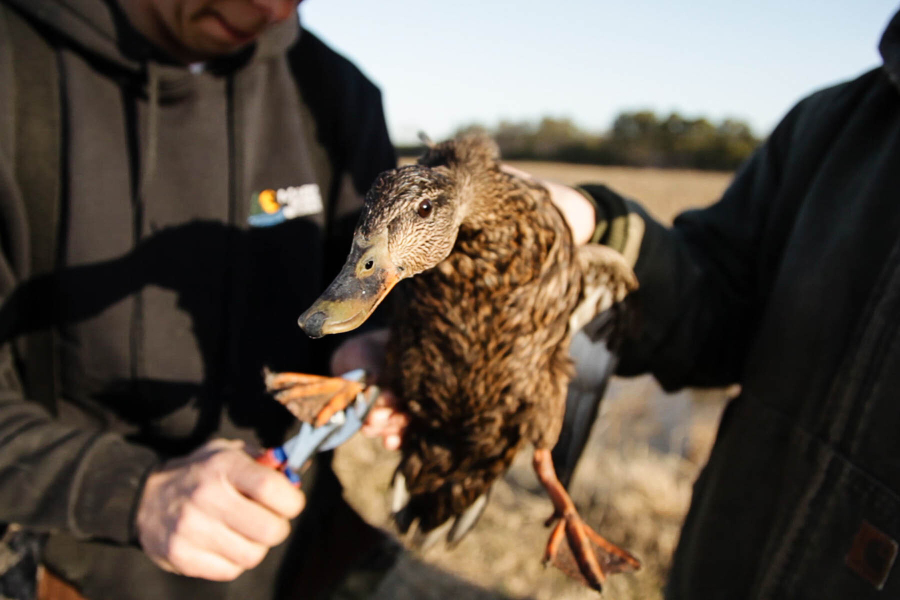Protecting the home of the American black duck
Working to conserve, restore habitat for once-abundant waterfowl

Hutch Walbridge, Wildlife Biologist with the Maryland Department of Natural Resources, places an identification band on the leg of a female American black duck on a farm in Church Creek, on Maryland’s Eastern Shore, on March 5, 2013.
Not truly black, the dark, dusky-brown plumage of the American black duck (Anas rubripes) appears black from a distance. This shy, native waterfowl can be found year-round along the quiet, isolated tidal wetlands of the Chesapeake Bay and its rivers. When food sources in the north become scarce in colder months, additional ducks migrate to the Bay region to overwinter.
Black ducks were once the most abundant dabbling duck in eastern North America. But as the Bay’s wetlands disappeared, black duck populations dropped dramatically. In the 1950s, close to 200,000 black ducks spent their winters in the Chesapeake Bay region. But recent estimates show that, from 2013 and 2015, just over 51,000 black ducks overwintered on the Bay each year.
Marshes and wetlands in the Bay region are critical to the long-term survival of the black duck. Protection of the area’s remaining tidal marshes—along with large-scale habitat restoration projects like Poplar Island—helps provide the birds with the habitat and food sources they need. Under the Chesapeake Bay Watershed Agreement, our partners are working toward having enough habitat to support 100,000 wintering black ducks by 2025.
Learn more about what experts are doing to conserve habitat for the American black duck.

Comments
There are no comments.
Thank you!
Your comment has been received. Before it can be published, the comment will be reviewed by our team to ensure it adheres with our rules of engagement.
Back to recent stories